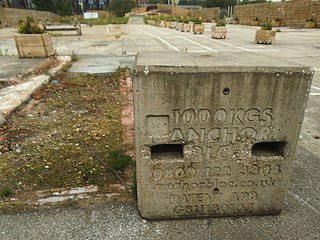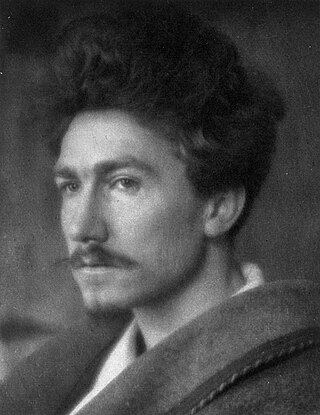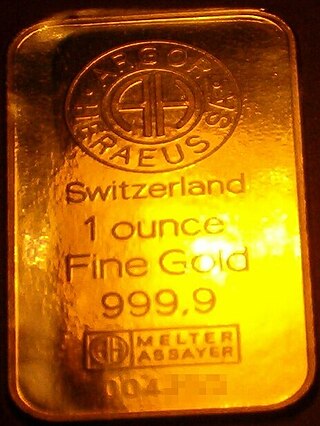Density is the substance's mass per unit of volume. The symbol most often used for density is ρ, although the Latin letter D can also be used. Mathematically, density is defined as mass divided by volume:

Horsepower (hp) is a unit of measurement of power, or the rate at which work is done, usually in reference to the output of engines or motors. There are many different standards and types of horsepower. Two common definitions used today are the mechanical horsepower, which is about 745.7 watts, and the metric horsepower, which is approximately 735.5 watts.

The pound or pound-mass is a unit of mass used in British imperial and United States customary systems of measurement. Various definitions have been used; the most common today is the international avoirdupois pound, which is legally defined as exactly 0.45359237 kilograms, and which is divided into 16 avoirdupois ounces. The international standard symbol for the avoirdupois pound is lb; an alternative symbol is lbm, #, and ℔ or ″̶.

In physics and mechanics, torque is the rotational equivalent of linear force. It is also referred to as the moment of force. It represents the capability of a force to produce change in the rotational motion of the body. The concept originated with the studies by Archimedes of the usage of levers, which is reflected in his famous quote: "Give me a lever and a place to stand and I will move the Earth". Just as a linear force is a push or a pull, a torque can be thought of as a twist to an object around a specific axis. Torque is defined as the product of the magnitude of the perpendicular component of the force and the distance of the line of action of a force from the point around which it is being determined. The law of conservation of energy can also be used to understand torque. The symbol for torque is typically , the lowercase Greek letter tau. When being referred to as moment of force, it is commonly denoted by M.

The tonne is a unit of mass equal to 1000 kilograms. It is a non-SI unit accepted for use with SI. It is also referred to as a metric ton to distinguish it from the non-metric units of the short ton, and the long ton. It is equivalent to approximately 2204.6 pounds, 1.102 short tons, and 0.984 long tons. The official SI unit is the megagram, a less common way to express the same mass.

United States customary units form a system of measurement units commonly used in the United States and most U.S. territories. since being standardized and adopted in 1832. The United States customary system developed from English units which were in use in the British Empire before the U.S. became an independent country. The United Kingdom's system of measures was overhauled in 1824 to create the imperial system, which was officially adopted in 1826, changing the definitions of some of its units. Consequently, while many U.S. units are essentially similar to their imperial counterparts, there are significant differences between the systems.

The standard circulating coinage of the United Kingdom, British Crown Dependencies and British Overseas Territories is denominated in pennies and pounds sterling, and ranges in value from one penny sterling to two pounds. Since decimalisation, on 15 February 1971, the pound has been divided into 100 (new) pence. Before decimalisation, twelve pence made a shilling, and twenty shillings made a pound.

Ezra Weston Loomis Pound was an expatriate American poet and critic, a major figure in the early modernist poetry movement, and a fascist collaborator in Italy during World War II. His works include Ripostes (1912), Hugh Selwyn Mauberley (1920), and his 800-page epic poem, The Cantos (c. 1917–1962).
The symbol # is known variously in English-speaking regions as the number sign, hash, or pound sign. The symbol has historically been used for a wide range of purposes including the designation of an ordinal number and as a ligatured abbreviation for pounds avoirdupois – having been derived from the now-rare ℔.

Imagism was a movement in early-20th-century Anglo-American poetry that favored precision of imagery and clear, sharp language. It is considered to be the first organized modernist literary movement in the English language. Imagism is sometimes viewed as "a succession of creative moments" rather than a continuous or sustained period of development. The French academic René Taupin remarked that "it is more accurate to consider Imagism not as a doctrine, nor even as a poetic school, but as the association of a few poets who were for a certain time in agreement on a small number of important principles".

Troy weight is a system of units of mass that originated in 15th-century England, and is primarily used in the precious metals industry. The troy weight units are the grain, the pennyweight, the troy ounce, and the troy pound. The troy grain is equal to the grain unit of the avoirdupois system, but the troy ounce is heavier than the avoirdupois ounce, and the troy pound is lighter than the avoirdupois pound. One troy ounce equals exactly 31.1034768 grams.

Sterling is the currency of the United Kingdom and nine of its associated territories. The pound is the main unit of sterling, and the word "pound" is also used to refer to the British currency generally, often qualified in international contexts as the British pound or the pound sterling.

The pound sign£ is the symbol for the pound unit of sterling – the currency of the United Kingdom and previously of Great Britain and of the Kingdom of England. The same symbol is used for other currencies called pound, such as the Gibraltar, Egyptian, Manx and Syrian pounds. The sign may be drawn with one or two bars depending on personal preference, but the Bank of England has used the one-bar style exclusively on banknotes since 1975.
Pound for pound is a ranking used in combat sports, such as boxing, wrestling, or mixed martial arts, of who the better fighters are irrespective of their weight, i.e. adjusted to compensate for weight class. As these fighters do not compete directly, judging the best fighter pound for pound is subjective, and ratings vary. They may be based on a range of criteria including "quality of opposition" and factors such as how exciting the fighter is or how famous they are, or be an attempt to determine who would win if all those ranked were the same size.

The Ordnance Quick-Firing 6-pounder 7 cwt, or just 6-pounder, was a British 57 mm gun, serving during the Second World War as a primary anti-tank gun of both the British and United States Army. It was also used as the main armament for a number of armoured fighting vehicles.
English units are the units of measurement used in England up to 1826, which evolved as a combination of the Anglo-Saxon and Roman systems of units. Various standards have applied to English units at different times, in different places, and for different applications.

The pound per square inch or, more accurately, pound-force per square inch is a unit of pressure or of stress based on avoirdupois units. It is the pressure resulting from a force of one pound-force applied to an area of one square inch. In SI units, 1 psi is approximately equal to 6895 Pa.
A pound-foot (lb⋅ft), abbreviated from pound-force foot , is a unit of torque representing one pound of force acting at a perpendicular distance of one foot from a pivot point. Conversely one foot pound-force is the moment about an axis that applies one pound-force at a radius of one foot.
The 1929 Notre Dame Fighting Irish football team was an American football team that represented the University of Notre Dame as an independent during the 1929 college football season. In their 12th year under head coach Knute Rockne, the Irish compiled a perfect 9–0 record and outscored opponents by a total of 145 to 38, with four shutouts.
The 1899 Lafayette football team represented Lafayette College in the 1899 college football season. Lafayette shut out 10 opponents and finished with a 12–1 record in their first year under head coach Samuel B. Newton. Significant games included victories over Penn (6–0), Lehigh, and Cornell (6–5), and its sole loss coming against co-national champion Princeton (0–12). The 1899 Lafayette team outscored its opponents by a combined total of 253 to 23.











